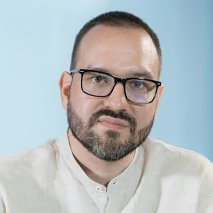Salivary Medicine and Regeneration of Salivary Glands
A special issue of Dentistry Journal (ISSN 2304-6767).
Deadline for manuscript submissions: closed (31 August 2020) | Viewed by 6197
Special Issue Editor
Special Issue Information
Dear Colleagues,
Saliva is a biological fluid which maintains oral health (protecting teeth and tongue) while also taking an active part in digestion, taste sensing and antimicrobial mechanisms. A major clinical problem is the lack of saliva caused by various malfunctions of salivary glands. Repairing or regenerating the salivary glands by restoring a healthy cellular microenvironment is regarded as an appealing alternative to the current limited palliative-only treatments (sialagogues or artificial saliva). Salivary glands are known to possess an intrinsic recovery potential, which allows them to self-repair after experimental induced atrophy. The regeneration capability of salivary glands is among top research topics in salivary research.
Salivary biomarker data, as well as developmental pathways findings, are helping to rapidly piece together the puzzle of salivary gland regeneration.
In this Special Issue, we intend to sum up the latest discoveries in the field in order to serve as a useful tool for researchers that are interested in both saliva and regenerative medicine.
Dr. Mihnea-Ioan Nicolescu
Guest Editor
Manuscript Submission Information
Manuscripts should be submitted online at www.mdpi.com by registering and logging in to this website. Once you are registered, click here to go to the submission form. Manuscripts can be submitted until the deadline. All submissions that pass pre-check are peer-reviewed. Accepted papers will be published continuously in the journal (as soon as accepted) and will be listed together on the special issue website. Research articles, review articles as well as short communications are invited. For planned papers, a title and short abstract (about 100 words) can be sent to the Editorial Office for announcement on this website.
Submitted manuscripts should not have been published previously, nor be under consideration for publication elsewhere (except conference proceedings papers). All manuscripts are thoroughly refereed through a single-blind peer-review process. A guide for authors and other relevant information for submission of manuscripts is available on the Instructions for Authors page. Dentistry Journal is an international peer-reviewed open access monthly journal published by MDPI.
Please visit the Instructions for Authors page before submitting a manuscript. The Article Processing Charge (APC) for publication in this open access journal is 2000 CHF (Swiss Francs). Submitted papers should be well formatted and use good English. Authors may use MDPI's English editing service prior to publication or during author revisions.
Keywords
- Saliva
- Biomarkers
- Salivary glands
- Regenerative medicine






